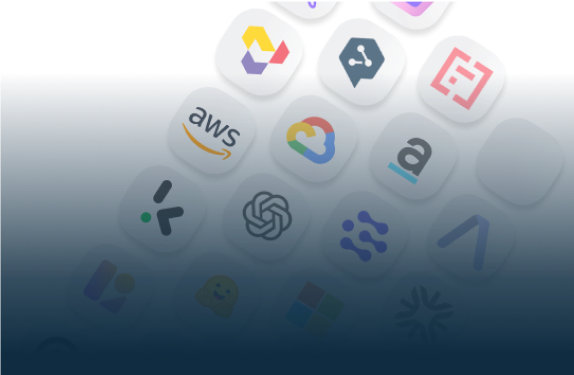
Start Your AI Journey Today
- Access 100+ AI APIs in a single platform.
- Compare and deploy AI models effortlessly.
- Pay-as-you-go with no upfront fees.

Image Embeddings use deep learning models, such as convolutional neural networks, to create numerical representations of images. These representations are complex, high-dimensional vectors that capture the essence of the images.
Developers can use image embeddings to submit images and receive corresponding embeddings, making tasks like identifying similar images, organizing images, and retrieving pictures based on their content easier.

The API simplifies complex image processing tasks by using pre-trained models allowing you to take advantage of deep learning in different applications without having to train models from scratch.
As of now, dedicated APIs exclusively offering image embeddings are not available. Developers seeking image embeddings can, however, turn to multimodal embeddings APIs which offer a broader spectrum by accommodating diverse data types, allowing developers to handle various types of data (images, text, etc.) in a unified way.

You can use Image Embeddings in numerous fields, here are some examples of common use cases:
As mentioned above, developers looking for image embeddings can opt for multimodal embeddings APIs, providing a comprehensive solution that handles diverse data types, such as images and text, in a unified manner. While comparing Multimodal Embeddings APIs, it is crucial to consider different aspects, among others, cost security and privacy.
Image Embeddings experts at Eden AI tested, compared, and used many Multimodal Embeddings APIs of the market. Here are some actors that perform well (in alphabetical order):
.png)
The Titan Multimodal Embeddings API is a programming interface for multimodal embeddings. It can be used to search for images by text, image, or a combination of text and image.
The API converts images and short English text up to 128 tokens into embeddings that capture semantic meaning and relationships between data. The API generates vectors of 1,024 dimensions that can be used to build search experiences with high accuracy and speed.

Aleph Alpha provides multimodal and multilingual embeddings via its API. This technology enables the creation of text and image embeddings that share the same latent space. The Image Embedding API enhances image processing by integrating advanced capabilities to assist with recognition and classification.
The robust algorithms extract rich visual features, providing versatility for applications in various sectors, including e-commerce and content-driven services.
.png)
Google's Multimodal Embeddings API generates 1408-dimensional vectors based on input data, which can include images and/or text. These vectors can be used for tasks such as image classification or content moderation.
The image and text vectors are in the same semantic space and have the same dimensionality. Therefore, these vectors can be used interchangeably for tasks such as searching for images using text or searching for text using images.

Microsoft's Multi-modal embeddings API enables the vectorization of both images and text queries. Images are converted to coordinates in a multi-dimensional vector space, and incoming text queries can also be converted to vectors.
Images can then be matched to the text based on semantic closeness, allowing users to search a set of images using text without the need for image tags or other metadata.
.png)
The OpenAI Contrastive Learning In Pretraining (CLIP) API is capable of comprehending concepts in both text and image formats, and can even establish connections between the two modalities.
This is made possible by the use of two encoder models, one for text inputs and the other for image inputs. These models generate vector representations of the respective inputs, which are then used to identify similar concepts and patterns across both domains using vector search.

Replicate's Multimodal embeddings API is ideal for searching images by text, image, or a combination of text and image. It is designed for high accuracy and fast responses, making it an excellent choice for search and recommendation use cases.

Image Embeddings' performance can vary depending on several variables, including the technology used by the provider, the underlying algorithms, the amount of the dataset, the server architecture, and network latency. Listed below are a few typical performance discrepancies between several Multimodal Embeddings APIs:
Companies and developers from a wide range of industries (Social Media, Retail, Health, Finances, Law, etc.) use Eden AI’s unique API to easily integrate Image Embeddings tasks in their cloud-based applications, without having to build their solutions.
Eden AI offers multiple AI APIs on its platform among several technologies: Text-to-Speech, Language Detection, Sentiment Analysis, Face Recognition, Question Answering, Data Anonymization, Speech Recognition, and so forth.
We want our users to have access to multiple Image Embeddings engines and manage them in one place so they can reach high performance, optimize cost, and cover all their needs. There are many reasons for using multiple APIs :
Eden AI is the future of AI usage in companies: our app allows you to call multiple AI APIs.

The Eden AI team can help you with your Image Embeddings integration project. This can be done by:


You can directly start building now. If you have any questions, feel free to chat with us!
Get startedContact sales